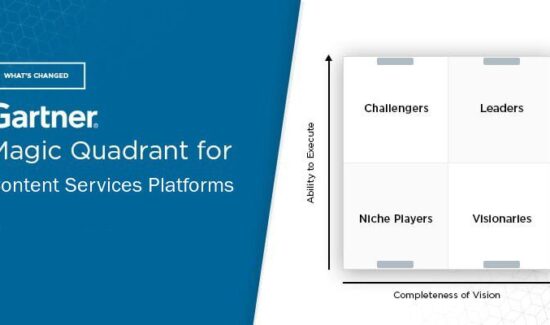An Overview of Gartner’s 2017 Magic Quadrant for Content Collaboration Platforms

 Gartner Inc., the information technology research and analysis giant, has recently released its 2017 Magic Quadrant for Content Collaboration Platforms (CCP).
Gartner Inc., the information technology research and analysis giant, has recently released its 2017 Magic Quadrant for Content Collaboration Platforms (CCP).
Content collaboration platforms are considered to be the evolution of the Enterprise File Synchronization and Sharing (EFSS) destination products and address digital workplace enablement strategies. EFSS refers to a range of on-premises or cloud-based capabilities that enables individuals to synchronize and share documents, photos, videos and files across multiple devices, such as smartphones, tablets, etc.
Application leaders can then choose among a range of options to transform individual productivity, team collaboration and business workflow automation. This Magic Quadrant report is an excellent resource for buyers looking to choose the right Content Collaboration Platform for their business or organization.
Gartner defines the CCP market as a range of content-centric platforms enabling secure file productivity and content collaboration for individuals and teams as well as supporting the creation of a modern digital workplace. Core functionalities include mobile access, file synchronization across devices and cloud repositories, file sharing with people and applications inside or out the organization, and file search and retrieval across multiple file repositories.
In addition, these platforms (at different levels) support collaborative document creation and teamwork, lightweight content management, and workflows through integration with third-party tools. Deployments of CCP can be in public cloud, hybrid cloud, private cloud, or on-premise.
Key Takeaways
CCP offerings present different levels of support for: mobility, simplicity and usability, file manipulation, user productivity, collaboration, content management, workflow, analytics, security and data protection, data governance, administration and management, integration, and lastly, storage with some using a central data repository.
Gartner researched and analyzed a total of 13 vendors for the Magic Quadrant report. Each vendor is evaluated based on their ability to execute and completeness of vision. They are then placed on the Magic Quadrant graphic composed of four categories: Leaders, Challengers, Visionaries and Niche Players.
Leaders provide mature offerings that meet market demand and Challengers have a strong ability to execute but may not have a plan that will maintain a strong value proposition for new customers. Visionaries align with Gartner’s view of how a market will evolve, but have fewer proven capabilities to deliver against that vision, and Niche Players do well in a particular segment of a market, but have a limited capability to innovate or outperform others.
The report also provides an entire CCP market overview in depth for those still learning about it.
Read the 2017 Magic Quadrant for Content Collaboration Platforms.



















